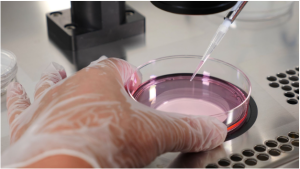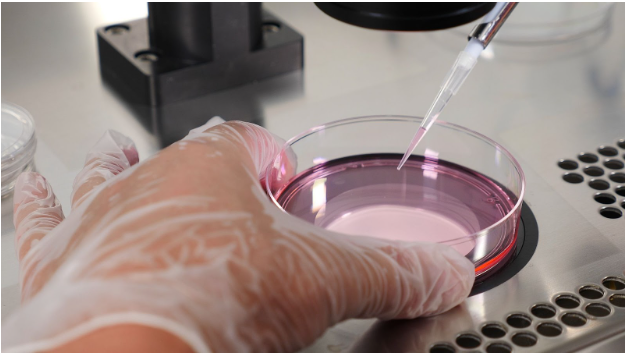Complete Guide to Egg Retrieval: Preparing, Procedure, and Recovery

Egg retrieval is fundamental to assisted reproductive technologies like In Vitro Fertilisation (IVF). It involves collecting eggs from a woman’s ovaries, fertilised in a laboratory to form embryos. This guide provides an in-depth look at the entire egg retrieval process, including preparation, the procedure, and recovery.
What is Egg Retrieval?
Egg retrieval, or oocyte retrieval or aspiration, is a medical procedure designed to collect eggs from a woman’s ovaries. It is typically performed as part of an IVF cycle or other fertility treatments. The collected eggs are fertilised with sperm in a lab, and the resulting embryos are transferred into the uterus. The egg retrieval procedure is critical for women undergoing fertility treatments to maximise the chances of conception.
Egg Retrieval Process & Timelines
Here’s a detailed timeline of the egg retrieval process:
| Stage | Timeline | Details |
| Initial Consultation | 2-4 weeks before cycle starts | Includes a review of medical history, diagnostic tests, and development of a tailored treatment plan. Medications like birth control pills may be prescribed to regulate the cycle and prevent cysts. |
| Ovarian Stimulation | 8-14 days | Daily hormone injections (FSH, LH, or HCG) stimulate the ovaries to produce multiple follicles. Regular monitoring through blood tests and ultrasounds is conducted to track follicle development. |
| Trigger Shot | 36 hours before retrieval | A final injection of HCG triggers the release of mature eggs. |
| Egg Retrieval Procedure | Day of retrieval (15-30 minutes) | Eggs are collected via ultrasound-guided transvaginal aspiration under sedation. The procedure is minimally invasive, lasting 15-30 minutes. |
| Fertilization & Embryo Development | Within 1-5 days after retrieval | Eggs are fertilized with sperm using conventional insemination or ICSI. Embryos are monitored for development, and the best ones are selected for transfer or freezing. |
| Embryo Transfer | 3-5 days after fertilization | The selected embryo(s) are transferred to the uterus. This is a quick and non-invasive procedure, similar to a pap smear, and usually doesn’t require anesthesia. |
| Pregnancy Test | 9-12 days after transfer | Blood tests are conducted to confirm pregnancy. Progesterone supplements may continue during this period to support the uterine lining. |
This timeline provides an overview of the critical phases and their durations within the egg retrieval and IVF cycle. The entire process, from the start of ovarian stimulation to the embryo transfer, typically spans 4-6 weeks, depending on individual response and the specific treatment plan.
- Preparation for the Cycle
The preparation phase sets the stage for a successful egg retrieval. Here’s what you can expect:
Initial Consultation and Evaluation:
- Medical History Review: Your fertility specialist will review your medical history, including previous fertility treatments, health conditions, and lifestyle factors. This helps in designing a customised treatment plan.
- Diagnostic Tests: Blood tests will assess hormone levels (such as FSH, LH, and estrogen), ovarian reserve, and overall reproductive health. An ultrasound will also be performed to evaluate the ovaries and uterus. These tests help determine the most appropriate stimulation protocol.
Cycle Planning:
- Treatment Plan Development: Your fertility specialist will create a detailed treatment plan based on the diagnostic results. This plan will include the types and dosages of medications you will need, the monitoring schedule, and the timing of the egg retrieval procedure.
- Medication Instructions: You’ll receive detailed instructions on administering hormonal medications, including the type of injections and the schedule. This might involve daily injections of FSH and LH to stimulate the ovaries.
- Stimulating the Ovaries
Ovarian stimulation is crucial to ensure that multiple eggs are produced and ready for retrieval:
Hormonal Medications:
- Medications Used: You’ll be prescribed injectable hormones like FSH (Follicle-Stimulating Hormone) and LH (Luteinizing Hormone). These hormones stimulate the ovaries to produce multiple follicles, each containing an egg.
- Dosage and Administration: Hormone dosages are tailored to your individual needs. You will learn how to inject these medications yourself or have them administered by a healthcare provider. The injections are typically given daily for about 8-14 days.
Monitoring and Adjustments:
- Ultrasound Monitoring: Regular transvaginal ultrasounds will be performed to monitor the growth and development of ovarian follicles. This helps track the number and size of follicles and assesses their readiness for egg retrieval.
- Blood Tests: Periodic blood tests will measure hormone levels, providing information about how well your ovaries respond to the stimulation. Based on these results, your medication dosages may be adjusted to optimise follicle development.
- The Egg Retrieval Procedure
The egg retrieval procedure is a minimally invasive surgical technique performed under sedation:
Preparation:
- Pre-Procedure Instructions: You’ll receive specific instructions on what to do before the procedure, such as fasting for a certain period if sedation is required.
- Sedation and Anesthesia: On the day of the procedure, you will be given sedation to ensure you are comfortable and relaxed. Depending on your case, you may receive conscious sedation (twilight sleep) or general anesthesia.
Procedure Details:
- Ultrasound Guidance: The procedure is performed using a transvaginal ultrasound probe. A thin, hollow needle is guided through the vaginal wall into the ovaries. The needle is used to aspirate the fluid from each follicle, which contains the eggs.
- Collection: The eggs are collected into sterile containers and immediately taken to the laboratory for processing. The procedure typically lasts between 15 and 30 minutes. It is minimally invasive, but a precise technique is required to avoid damaging surrounding tissues.
Post-Procedure Care:
- Egg Retrieval Recovery and Monitoring: After the procedure, you will be monitored briefly to ensure you recover from the sedation. You may experience mild cramping, bloating, or spotting, typical side effects.
- Discharge Instructions: You will receive instructions on how to care for yourself post-procedure. This includes advice on managing any discomfort and when to resume normal activities.
- Lab Analysis & Fertilization
Once the eggs are retrieved, they are processed and prepared for fertilisation:
Egg Processing:
- Egg Assessment: The retrieved eggs are assessed for maturity and quality in the lab. Mature eggs are selected for fertilisation, while immature or poor-quality eggs are discarded.
- Preparation for Fertilization: The selected eggs are washed and placed in a suitable culture medium to prepare them for interaction with sperm.
Fertilisation Techniques:
- Conventional Insemination: In this method, sperm is added to the eggs in a petri dish, allowing for natural fertilisation. Sperm and eggs are incubated together to facilitate fertilisation.
- Intracytoplasmic Sperm Injection (ICSI): This technique is used when sperm quality or quantity is a concern. A single sperm is directly injected into an egg to achieve fertilisation. It is especially useful in cases of male factor infertility.
Embryo Development:
- Monitoring: The fertilised eggs (embryos) are monitored for development. They are checked for signs of successful fertilisation and early embryo growth. The embryologist assesses their development and decides on the best embryos for transfer or freezing.
- Rest & Recovery
Egg retrieval recovery is an essential phase for ensuring overall well-being and preparing for the following steps:
Immediate Care:
- Rest and Recuperation: You must rest for a few hours after the procedure. It’s normal to experience cramping and bloating, which can be managed with over-the-counter pain relief if your doctor recommends it.
- Activity Restrictions: For a few days following the procedure, it’s advisable to avoid strenuous activities and heavy lifting to prevent complications and allow your body to recover.
Follow-Up Care:
- Monitoring for Complications: Although rare, complications such as ovarian hyperstimulation syndrome (OHSS) may occur. Your doctor will instruct you on what symptoms to watch for and when to seek medical advice.
- Preparing for Next Steps: Depending on the outcome of the fertilisation process, you will discuss the next steps with your fertility specialist, including embryo transfer or embryo freezing.
Conclusion
Egg retrieval is a crucial step in fertility treatment, involving careful preparation, precise execution, and thoughtful recovery. Understanding each process phase—from initial preparation to post-procedure care—can help you confidently navigate the journey and improve your chances of a successful outcome. Always follow your fertility specialist’s guidance to ensure the best possible results and a smooth experience throughout your IVF egg retrieval process.






